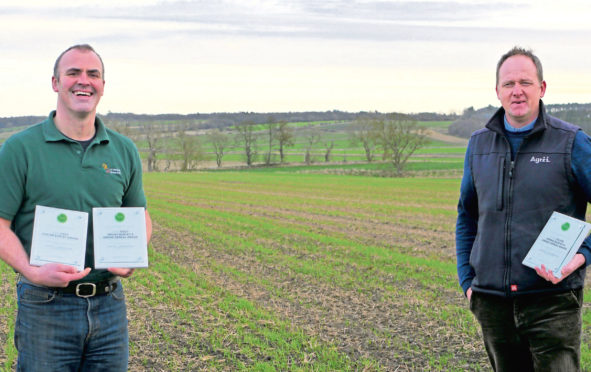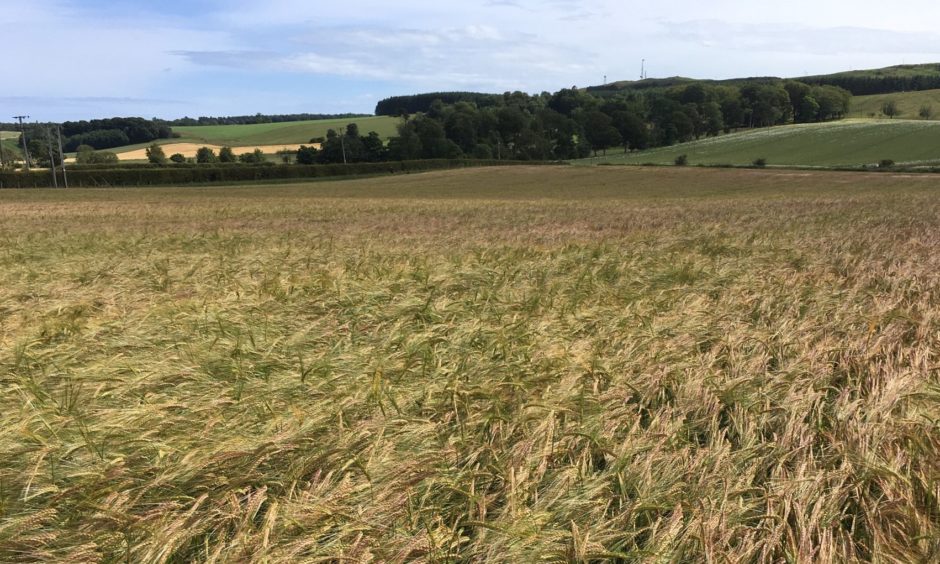Most barley growers can only dream of the yields achieved by Strathkinness farmer David Bell and his Agrii agronomist Iain Anderson in the recent YEN competition.
They won a gold for the best percentage of winter barley potential yield with an 11.9t/ha crop of Senova’s Bordeaux, fully 84% of its calculated potential, as well as the best spring barley yield award with a massive 11.3t/ha from LG Diablo in a season in which the average entry in the competition did 7.1t/ha.
What’s more, it all went for malting.
David said they were most proud of the spring barley achievement after the ground sat cold and wet all winter and they couldn’t get near it until near the end of March.
“But the emphasis we’ve always placed on soil health, and the little-and- often approach we took with the crop’s agronomy really paid dividends in allowing it to cope with the season’s challenges.”
He added: “Fence-to-fence across the 6.5ha field in which we grew the YEN crop, we averaged a dried yield of 10.8t/ha.”
Feeding the soil then feeding the crop has long been David and Iain’s recipe at Upper Magus Farm.
A mixed rotation including grass leys for the suckler herd and regular additions of farmyard manure from the beef finishers, topped-up with “imported” chicken muck, has built soil health to enviable levels on much of the clay loam ground, giving it a resilience that is proving especially valuable given the climatic extremes.
Iain Anderson said: “Soil analysis is a valuable starting point for us, but we find regular tissue testing throughout the season essential to tailor our nutrition to the crop and conditions.
“Last season, in particular, we were finding in-plant deficiencies of nutrients that weren’t low in the soil – most likely due to the stressful weather conditions, underlining the importance of not just relying on soil analysis.
“We tailored our foliar nutrition more precisely than ever in the YEN fields and the extra tonnes it gave us handsomely rewarded the additional spend. This experience gives us the confidence to take the same approach more widely across the farm from now on.”
Both men agree the YEN process doesn’t just offer proof of the performance they can achieve, it lets them benchmark what they do against others across the country and gives them facts and figures on crop growth, development, yield components and nutrition from ADAS.
David said: “These are allowing Iain and I to pinpoint the things that work best and offer us the greatest potential for improvement so we can extend them across the rest of our cropping. The knowledge we get from AHDB and SRUC has also been key in helping us implement an IPM strategy to complement both the growing health of our crops and soils. But there’s still plenty to learn yet!”








